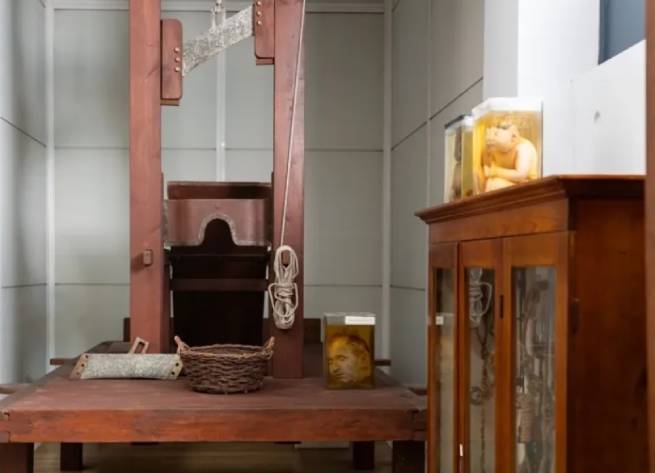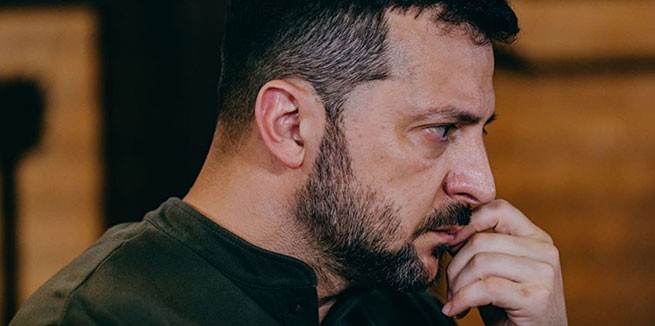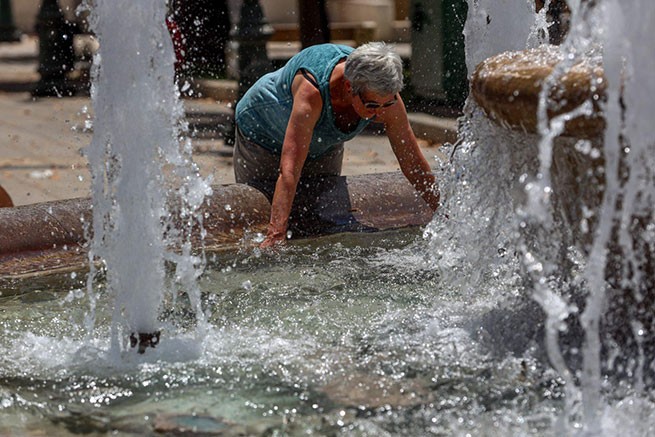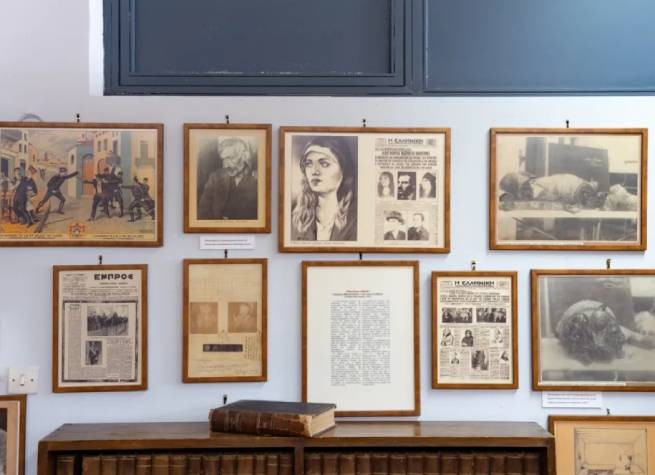Guillotine, skulls and heads of criminals, human fetuses in formaldehyde – the exhibits of the Forensic Science Museum in Goody are clearly not for the faint of heart.
Horrifying evidence of Greece's worst crimes is housed in the Museum of Forensic Science, which is located on Mikras Asias Street in Goudi, in the Laboratory of Forensic Medicine and Toxicology of the University of Athens.
In his hiding places, writes CNN Greece, more than 1,500 exhibits, including the only Greek guillotine and the head of the famous criminal Yagula (Γιαγκούλα). Konstantinos Moraitis, professor of forensic anthropology and director of the museum, gave journalists a short tour, showing real artifacts from the history of crime in Greece.
This museum, the professor explained, is visited by medical students, law students, active-duty police officers and researchers. It is not open to the general public and is primarily used for educational purposes.
The most “ancient” exhibit is the Nafplio guillotine, dating back to 1789, the time of the French Revolution. “It is the only one that exists in Greece. Otto’s father brought it in 1830,” says the professor. At first she was in Bourtsi, in Nafplio, to intimidate and behead the baripoinites (βαρυποινιτών). In total, 89 convicts were executed before its abolition in 1913.

When asked when forensic medicine was created in Greece, the professor replied:
“The first forensic report was drawn up in September 1910, when the Forensic Medical Service of the Ministry of Justice was created, and the first report drawn up at the Forensic Toxicology Laboratory of the University of Athens was in 1913, although there is no specific evidence for this.”
When asked by journalists what crime, in his opinion, is the worst committed in Greece, he does not answer immediately, thinking for a long time:
“I think the famous crime in Harokopou with the murder of Athanasopoulos.”
It was January 5, 1931. Dimitris Athanasopoulos, a major contractor of the time, was killed by his wife, mother-in-law, maid and mother-in-law's nephew. They dismembered him, tried to burn him and finally dumped his body in Kifissos, just like in an Agatha Christie scenario. At that time, this case aroused resonant interest in society; newspapers characterized it as “the crime of the century.” Songs and books were written about the monstrous crime, and theatrical performances were staged. Until other, even more horrifying stories overshadowed it.

The infamous Yagoulas is a robber who “worked” in the countryside: the “fear and horror” of Olympus, the legendary robber Fotis Yagoulas. His head, along with the famous “pardal” (“pαρδάλα”), the knife with which he killed 54 people in the early 20th century, is on display in the Crime Museum, along with the heads of other famous robbers with a “rich past”.
Each exhibit hides a separate story. If we turn to the basic theory of criminology, the professor says, the criminal meets three conditions: he had a motive, he had the means and he had the opportunity.







More Stories
Six Greek high school students win medals at International Mathematical Olympiad
Olympic Games: Greek Delegation Athletes Head to Paris
Big "police purge" on Athos